Avoid ruining your game room idea and ending up with a poorly assembled and uncomfortable area. Knowing how to make your game room an attractive and comfortable destination will help you effortlessly game, entertain, and enjoy your guests and loved ones.
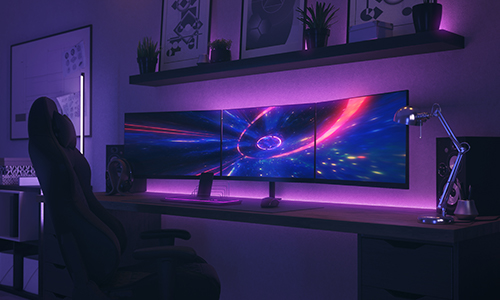
asidga.org gathered the following information, ideas, and tips to help you design, decorate, and furnish the ultimate game room.
Do you have a spare room? If so, you can transform it into the game room of your dreams! First, you’ll need to settle on a theme;
Tip: When selecting a game room theme, consider who will use it, their age group, and their recreational interests.
Once you’ve settled on a theme, get the room’s measurements and use the following ideas to help you create the best game room possible.
Game Room Ambient Lighting – Your game room should create an ambiance corresponding to your theme. The lighting you choose to install will help you enjoy the whole gaming experience. Natural lighting is not always the best choice for a digital or screen gaming area. The brightness can interfere with the visuals and ruin the gaming experience.
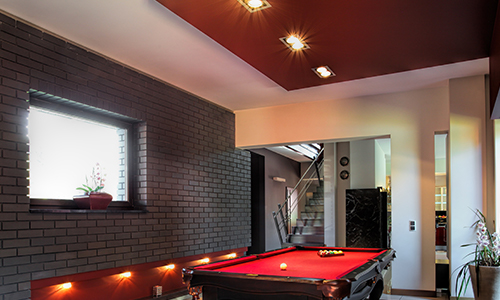
Your room’s lighting should always be designed to complement the type of games you intend to play. If your gaming space is for video games, then indirect, LED strips, or soft overhead lighting, may be better suited for the room.
However, RGB spectral deflections (color television, monitors, or home theater screens) can strain the eyes. While the lights should not interfere with the gaming experience, they should be sufficient to brighten the room’s interiors to prevent optical damage (online competitive gaming sessions can run long).
Game Room Decoration – The decor in your game room can reflect your favorite games and activities. You can display your favorite gaming collectibles, trophies, and consider using gaming wall art.
You can add collectibles to themed wall decor and develop creative scenery throughout the room.
Note: Video game room ideas are dependent on creating a welcoming and safe space to explore your horizons.
Gaming Furniture – For those developing a digital or online game room, get yourself a gaming desk. Particularly if your gaming activities will depend on a PC or a laptop. You need a flat surface for your keyboard and mouse (and space to put your food, snacks, and drinks).
If you use a large or wide-screen wall-mounted system, you will still need to consider installing shelf space or incorporating dynamic seating with cup holders or a fold-over table.
Game Room Seating – Your gaming chair should provide the best support and comfort when playing for long periods. Modern gaming chairs typically come equipped with adjustable armrests, lumbar support pads, headrests and can include personal surround sound.
Tip: Before investing significant resources in a gaming chair, test the product to ensure a comfortable experience.
Home Theater Seating – Home theater chairs are a group of movie recliners placed together with armrests in between. The armrests on theater-style seating typically feature holders for cups and snacks. Most entertainment chairs are made of leather or faux leather and are comfortably padded to make movie viewing a relaxing and enjoyable experience.
Tip: Install LED or fiber optic lighting strips beneath the seating, on the floor, or on the baseboards for low lighting that allows you to see where you are going without interfering with your cinematic experience.
More than Video Games – A game room is meant to assemble all family members, your friends, and loved ones when you wish to spend some quality time laughing and playing.
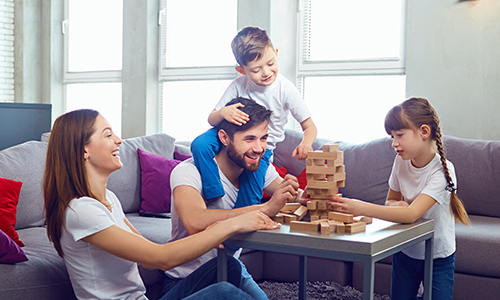
You can set up your game room to facilitate any gaming type (video games, board games, table games, etc.). It can be a fun-filled space to sit and play Monopoly, Hearts, Poker, Checkers, Chess, Pictionary, charades, etc.
Remember that gaming rooms are meant to provide a safe environment where children and adults can develop their creativity, inspiring young minds to build stronger, more competitive personalities with depth and intelligence.
Your gaming room design can include games like Scrabble, Scattergories, Hangman, and Crosswords can inspire better vocabulary usage and general knowledge.
Tip: For game rooms serving multiple age groups, install extra seating like beanbags, stools, and sofa space for comfortable lounging.
Adult Game Rooms – Many game room ideas are designed to be “man caves.” Such game rooms are typically complete with a full wet bar, TV to watch sports, and a billiard, pool, or poker table resembling a high-class sports bar setting.
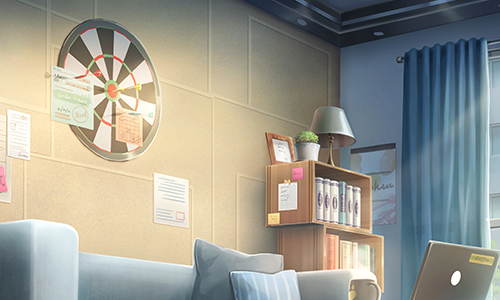
Instead of folding up and tucking away old board games or putting away movie premier posters, frame them and hang them on the walls. It’s the perfect way to decorate game room walls around your foosball or pool table.
In this article, you discovered exciting ideas and tips that will help you design, decorate, and furnish the perfect game room for your fun and relaxation.
Knowing how to decorate and furnish your game room will help you avoid uncomfortable furniture, prevent stressing your eyesight, and create a welcoming environment for friends and loved ones.
Ignoring the need to plan out your game room design will leave you with a mixture of random and uncomfortable furniture, poor lighting, and an off-putting atmosphere, in a place initially intended for comfort and enjoyment.
Sources:
scalar.usc.edu/works/ideas-1/index
yourgamecave.com/what-is-a-game-room-in-a-house/
hgtv.com/design/rooms/other-rooms/engaging-game-rooms-pictures
Avoid looking cheap and out of touch with your decorating this Christmas season. Knowing what you can do to decorate your home for the holidays smartly will leave your guests and loved ones enamored with your interior design skills.

asidga.org gathered the following information, ideas, and tips to help you decorate your home’s interior smartly for the holiday season.
What we consider Christmas decorations can be traced back to well over 2,500 years ago in ancient Rome. During the pagan festival “Saturnalia,” homes would be decorated in evergreen wreaths and boughs, and a sizable feast was held at which offerings (gifts) were presented to the gods.
However, according to history.com, Germany is credited with originating the Christmas tree tradition as we now know it today. In the 16th century, devout Christians brought decorated trees into their homes.
No matter which Christmas, Hanukkah, or Kwanzaa decoration ideas you have, the ideal time to decorate for Christmas is traditionally the weekend of Thanksgiving. However, If you’re still pondering how early is too early, know that putting up Christmas decorations before Halloween is too early.
Note: Even though late October through mid-November may be considered too early for Christmas decorations, it is not too early for planning your decor and buying the materials you will need.
Tip: By mid-October, you will typically start seeing Christmas decorations, trinkets, trees, and candy unceremoniously being put up for sale next to or above Halloween costumes and animatronics.
Your living room is your home’s prime real estate to showcase your interior decorating skills and ingenuity. Consider the following holiday season decor ideas:
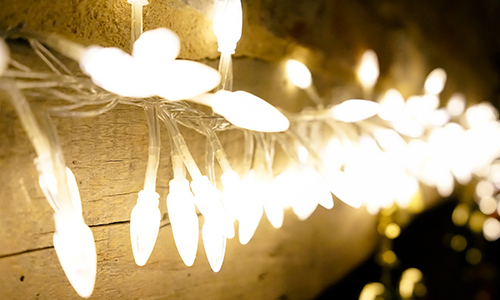
Take the traditional focus away from stockings, garlands, and ornaments. Instead, make your holiday decor in lights. If you are Christmas decorating without a tree or fireplace, hanging miniature or led lights on shelves and around doorways can transform your space.
Tip: Arrange your lights into wreaths or design the outline of a Christmas tree and stockings on the wall.
Christmas living rooms don’t need to be a complete redesign. Red plaids and natural greens can combine with existing wood trim to create a warm and cozy cabin look. Faux fur throws and a roaring fire will make the room warm and inviting.
Give traditional holiday color schemes a rest and use various colors to inspire your Christmas living room decor. Bright silver, blue, pink, green, and gold ornaments can hang from the tree, while presents can be wrapped in brightly colored or patterned wrapping paper. You can also hang colorful beaded garland strands from the windows to balance this eclectic decorating scheme.
Your tree is typically the focal point of the living room, but you can easily spread the theme throughout the room. Decorate a small living room for Christmas by Replacing the room’s artwork with holiday-themed pictures, portraits, and collectibles.
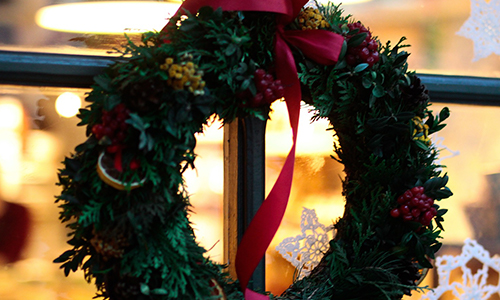
A simple arrangement of holiday greenery adds warmth to your holiday decorating theme. A full and stunning wreath can hang in front of a mirror or window, while vases and centerpieces can be filled with evergreen twigs and open pinecones. These are all-natural details that can be designed, put together, and placed easily.
Decorate your mantel or shelves with various holiday-themed objects featuring a common thread or color. Colorful ornaments can be attached to simple garland strands and then appear on tiny trees on either end.
Tip: Combine simple decorations with lighting to create mantel or shelf decor that turns your fireplace or shelving into a warm focal point for the holidays.
Decorations, table settings, pillows, throws, door and window trims, and ornaments all seem to follow a well-defined color selection. Consider the following colors when planning your holiday decor:
Green – Evergreen plant species, like Holly, Ivy, and Mistletoe, have been used for millennia to decorate and brighten up buildings during the long, harsh, and dark winter months. They also reminded us that spring would come and that winter does not last forever!
Red – Red has many symbolic meanings through different cultures, including life, health, vigor, war, courage, anger, love, and religious fervor. The common thread is that all these require passion.

Gold – This is the perceived color of the Sun and light – essential in the dark and cold winter. Both red and gold are the colors of fire needed to keep you warm.
Silver – Highlights of silver are often used in gold’s place or with it. But gold is the ‘warmer’ of the two.
White – Often associated with purity and peace in western cultures, white is often used to represent snow in decorative pieces.
This question is almost always a topic for debate, and many religious groups disagree over which date is the right one. Tradition dictates that the “Twelfth Night” is the best time to take down your festive holiday decorations (including the tree). The date falls on either January 5th or 6th, depending on whether you count Christmas as day one.
Note: Removing holiday decorations is often seen more personally than traditionally. While some will take them down on the “Twelfth Night,” others may leave them up through January.
In this article, you discovered helpful ideas, tips, and information to help you design and decorate your home for the holiday season.
Knowing how to use your home’s features with simple but elegant decorations and color combinations will help you arrange your home for a cozy, warm, and even nostalgic holiday setting.
Ignoring the need to combine and arrange colors and decorations can leave you appearing cheap and careless with your interior decorating.
Sources:
hgic.clemson.edu/factsheet/holiday-decorating-with-fresh-greenery/
collegian.psu.edu/asktheexperts/ways-to-make-your-home-more-festive-for-the-holidays/article_5757c128-2648-11ed-a3bb-f3b2dc8056ae.html
apps.dasnr.okstate.edu/SSL/www.dasnr.okstate.edu/news/resource-centers/holidays/decorations/history-of-the-christmas-tree/
Avoid looking and sounding foolish when trying to convey your interior decorating ideas and designs. Knowing the seven interior design elements will give you a deeper understanding of how to express them and how they depend on one another.

asidga.org gathered essential information to help you better comprehend the seven interior design elements and how they can be applied to your projects.
The 7 principal elements of design include space, line, form, light, color, texture, and pattern. A balance of these elements is crucial to every interior design project. Consider the following:
Space refers to the distance between and around objects, walls, furniture, and their proportions within a room. Finding the most agreeable balance within a room relies heavily on using both ‘positive’ and ‘negative’ space correctly.
Tip: Positive space is where the physical objects are, and the negative space is the empty space surrounding everything else. This empty space is typically used to highlight or showcase whatever is positioned next to it.
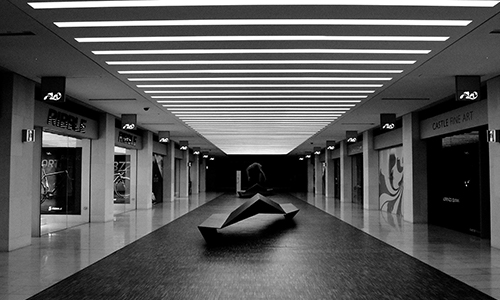
Line in interior design is the heart of form. Its characteristics comprise straight, vertical, horizontal, diagonal, and curved forms and define the shape and volume of space.
Tip: Lines are everywhere in design. They are used to divide space, direct the user’s eye, create flow, create emphasis, and organize all design elements into form. Generally, we don’t think about lines that much, but we make use of them quite often to visually communicate our objective to the user.
Form refers to the shapes of a room in general. It could be the shape of the entire space, the furniture, décor, and even the light fittings. There are two types; geometric and natural. Geometric forms are man-made, such as furniture.
Tip: Adding forms of similar shapes can create harmony and balance, while adding too many different shapes can have a confusing result. A space is typically more pleasing if the dominant form is repeated in minor objects throughout the room.
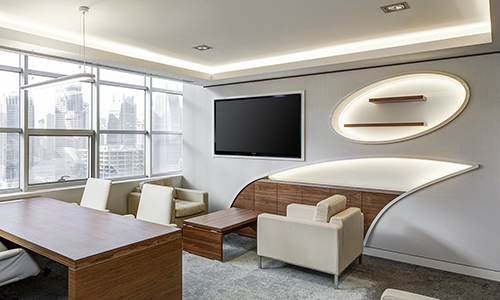
The use of lighting can add to or subtract from the overall colors of a room or from only those surfaces the light is meant to enhance. Darker colors make a room feel smaller and cramped, while light-colored walls do the opposite. The illusion of space is defined by light reflected off of the walls’ surfaces.
Tip: Lighting adds interest and drama to your interior, intensifying and highlighting the effect and mood you want to create.
Color, along with light, is considered by many to be one of the critical elements of interior design. It is used to create aesthetically pleasing combinations and also works on a psychological level.
Tip: The carefully considered use of color can unify furnishings and finishes to produce a cohesive and pleasing result.
Texture is the way a surface feels or the way it’s perceived to feel. It has the power to attract or detract a viewer’s eyes and can be applied to lines, shapes, and forms.
Tip: Texture can help you express “temperature,” like smooth and shiny textures which reflect more light and give a cool impression; soft, raised textures, which absorb more light, convey a sense of warmth.
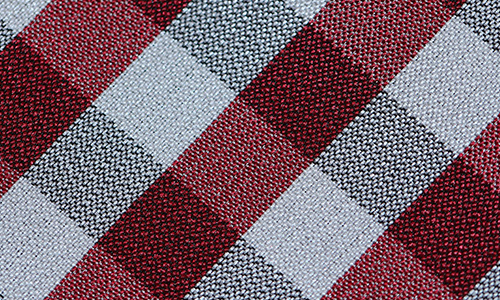
A pattern is a collection of lines and forms, making it a part of the “line” family of elements along with form. Like shapes, patterns accentuate a specific part of your interior like stairs, walls, the floor, the ceiling, etc.
Tip: Pattern is defined as a repeating element or design that produces apparent directional movements.
Interior designers manipulate the elements and principles of design for different effects. For example, they want to express stability, they design with symmetrical balance. They include asymmetrical elements if they want to break up a room’s monotony and make it more dynamic. The principles of design include:
Tip: Design principles help and allow you to create easy-to-use, pleasurable designs. You apply them when you select, create, and organize elements and features in your work.
In this article, you discovered definitions and explanations of the seven elements of interior design, how they are used in a room, and how they interact with each other to produce a finished product.
Knowing interior design elements, how to combine them, and how to express their purpose will help you design spaces according to the themes and ambiance your clients want in their rooms.
When you don’t fully comprehend the tools and verbiage of interior design, you risk appearing naive and inexperienced when trying to develop or explain an interior design project.
Sources:
extension.iastate.edu/4hfiles/statefair/EEHandbook/EEHJPDesign4H634.pdf
takingcharge.csh.umn.edu/explore-healing-practices/healing-environment/are-there-design-rules-follow
file:///Users/owner/Downloads/4H492.pdf
www2.hawaii.edu/~meidor/art_101/elements_of_design.html
Stop having the same decor year-round. Knowing how to decorate for the fun and exciting summer months will help keep your and your loved one’s moods and attitudes bright and cheery.
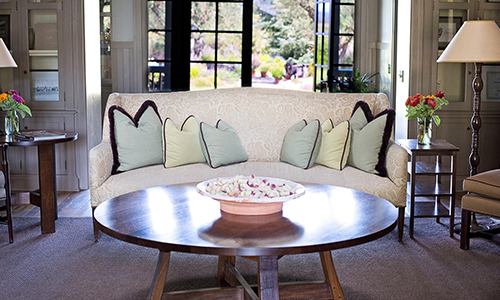
asidga.org gathered information and tips on how to decorate your home for the warm and exciting summer months.
Summer is well-represented by fresh flowers, bright colors, warmth, and sunshine. Make your home look like a summer-inspired space with bold and bright hues; a yellow backdrop with some outdoor-style summer decor, white furniture, and lush, thriving plants will brighten up your home this summer. Consider the following:
Flowers – Whether you pick them from your garden, buy them at the flower shop, or grow them in your home, flower arrangements can lighten up any space with bright colors and inviting aromas.
Tip: Hanging, potted plants are helpful in bringing even the most modern and streamlined spaces to life with vibrant color and grace.
Plant an Indoor Garden – Bring the outdoors indoors to heighten the summer spirit. Use stylish planters for fast-growing herbs, spices, leafy greens, and small vegetables.
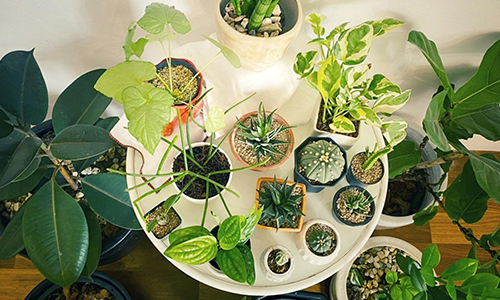
Note: An indoor garden not only adds life to your space, but it also repeatedly provides an edible harvest throughout the year.
Tip: Because of typically low-light levels indoors, maintaining healthy plants can be a challenge. Use a combination of internal and natural lighting to help your plants thrive.
Color – There’s no need to turn your space into a piece of modern art, but a strategic accent wall or lighter colored paint job can boost the mood in your home while capturing more light in the process.
Consider white, cream, tan, yellow, orange, and pink shades when coming up with a summer theme or repainting your space to reflect a lighter atmosphere and tone.
Pictures – Move the stuffy formal family portraits to a more private location and put up summer-themed or vacation-themed pictures.
Tip: Invest in a few digital frames that can display a series of pictures from your last road trip, vacation, or family gathering as a slideshow.
Candles – Use scented candles with a citrus, fresh linen, or fruit aroma to balance the “feel” of a room.
Rethink the Coffee Table – A coffee table is always a principal attraction in a living room, so it should always look fresh and in season. For summer decor, select the following:
Tip: Everything on your coffee table should follow the seasonal theme and highlight the room’s color scheme.
New Furniture – For those with more of a budget to work with, consider investing in new, lighter, and more modern furniture.
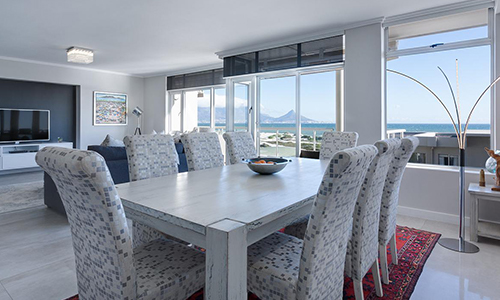
Note: Nothing compares to a home that’s open and bright, giving off good vibes and filled with aromas that you’ll love walking into every day. New multifunctional furniture gives you the opportunity to change colors, styles, and sizes all at once.
Upholstery and Pillows – Another way to embrace a summer theme is to have your furniture reupholstered, covered, or adorned with summer-toned pillows. Consider the following themes:
Tip: When decorating on a budget, vibrant throws and pillows will help you create a maximum effect with minimal expense.
Rugs – You can immediately change the tone of a room by laying a highly contrasting rug in its center. It doesn’t matter if the room has carpeting, vinyl flooring, or hardwood, the light, summery colors will lighten the atmosphere.
Tables – Extension tables conveniently allow you to transform a dining room area into a comfortable family and friends gathering space. Choosing the right one depends on how often it will be used and how much physical space is available.
Sheer Curtains – The transparency of sheer curtains allows you to dress a window without limiting sunlight in the room. Sheer curtains display elegance while providing a light, breezy, and summery feel.
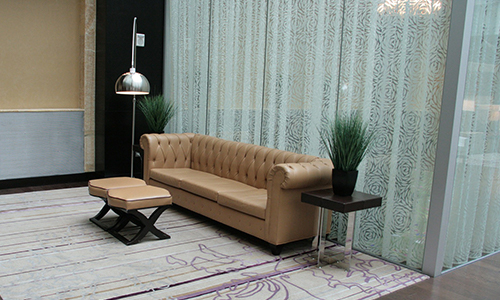
Tip: Sheer curtains fit perfectly in living room, bedroom, bathroom, and kitchen window decor.
Lighting – Even though it’s summer, the sun won’t stay up forever, and nighttime gives you the opportunity to show off your lighting skills.
Note: LED is a highly energy-efficient lighting technology, and using all LED lighting in your home can significantly reduce your energy usage throughout the year.
In this article, you discovered essential information and tips on decorating your home in a warm and bright summer theme.
Knowing how to decorate your home for the summer months will help you create a vibrant and more welcoming atmosphere for your invited friends and family.
Leaving your home decorated the same all the time can develop into a stale atmosphere, and quickly leave your home looking dated.
Sources:
nyiad.edu/design-articles/interior-design/nine-home-decor-tips-for-summer
energy.gov/energysaver/led-lighting
extension.uga.edu/publications/detail.html?number=B1318&title=Growing%20Indoor%20Plants%20with%20Success
scholar.lib.vt.edu/VA-news/ROA-Times/issues/1996/rt9603/960331/04040003.htm
Don’t be left behind with outdated design as the world moves forward and creates more functional interior spaces. Knowing how the global COVID-19 pandemic has modified the way people see interior design will help you remain relevant in the profession.

asidga.org gathered the following information about how the COVID-19 pandemic has reshaped interior design.
In March of 2020, world markets, cultures, and nations came to a grinding halt with lockdowns, mask mandates, social distancing, and travel restrictions. Significant culture changes happened in the workplace and school systems; working and learning from home became the new model that kept businesses afloat, children studying, and entire populations health conscious. As the world changed, so did interior design, and here’s how:
The concept of working from home has forced us to reconsider the notion of housing as mere “shelter.” People are investing more and more in their personal (home) space to have more comfortable, flexible, and specialized zones for specific household activities and routines, ranging from work to school or recreation time with kids.
People have abruptly realized that they need to build out specific zones for these activities, and some figured out their home isn’t adequate for that, whether it’s just physical space or something more nuanced.
With workforces slowly returning to the workplace, business models in companies worldwide have adopted a hybrid work model, and interior design has had to absorb the reality that remote work and study are here to stay.
Homeowners are now dedicating spaces to their work hours and installing them more reminiscent of their “traditional office” so they can still leave the workday behind at the shift’s end.
Another interior design modification is the installation of a pleasing aesthetic background for Zoom calls and virtual meetings. Lighting, attractive artwork, plants, and no clutter are all components people are considering when designing and decorating a video call space.
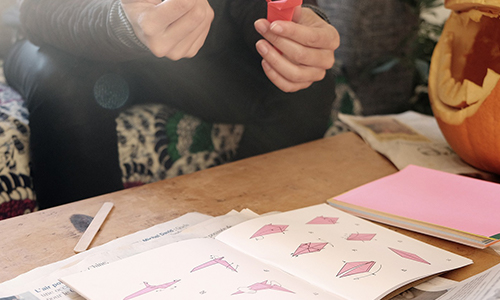
Considered a luxury in pre-pandemic times, the spare room wasn’t given much thought or consideration. However, once we were obliged to stay home, attics, garages, dining rooms, and spare bedrooms took on a whole new meaning as they were quickly converted into new spaces, like home offices, craft rooms, and study centers.
The home gym has become a more prominent addition due to social distancing and is now a highly desired space since people want to continue their workout/health journey in the comfort of their own home.
Accommodating guests and visiting family has taken a new form as these groups are moving outside. Fresh air and a gentle breeze just feel safer amidst the paranoia of the pandemic. Subsequently, yard spaces are being occupied with larger decks and patios.
This newfound affection for the outdoors has changed how these spaces are designed and set up. Tables, chairs, sofas, fireplaces, entertainment centers, even plumbing installations, etc., are being included to offer a feel of extension vs. separation.

Entryways, foyers, and mudrooms are receiving extra attention as people become more conscious of maintaining sanitary or clean areas and pronounced divisions between outdoor and indoor spaces.
These spaces allow one to enter a home, take off their scarves, coats, and shoes, and wash their hands. These spaces are nothing new, but their design is developing to make them much more functional. The formerly awkward request for a guest to remove their shoes or wash their hands is quickly becoming the accepted norm in household etiquette.
With travel and vacation plans still largely on hold, homeowners are looking for creative ways to make their homes feel more like a spa, prioritizing retreat-like bathrooms and areas for relaxation that get their tone from hospitality design.
With our daily lives spent mostly at home, the necessity of designing separate spaces for different activities has yielded the supercharged desire for open floor plans. Curtains, screen walls, partitions, and other eclectic dividers help isolate spaces for their intended use.
In this article, you discovered how the global pandemic has caused interior designers to adapt their concepts of interior and exterior space utilization.
Knowing how interior design has adapted to a world spending significantly more time at home will help you remain current in the interior design field and aid you in delivering the appropriate spaces your clients desire.
Ignoring pandemic-influenced interior design modifications will leave you struggling to comprehend the new needs and required flexibilities of the modern home.
Sources:
news.vcu.edu/article/Shrunken_worlds_reconfigured_spaces_How_the_pandemic_is_altering
design.lsu.edu/interior-design-pandemic/
news.fiu.edu/2020/home-design-in-the-age-of-social-distancing
forbes.com/sites/forbestechcouncil/2021/12/03/three-ways-covid-19-has-affected-the-interior-design-market/